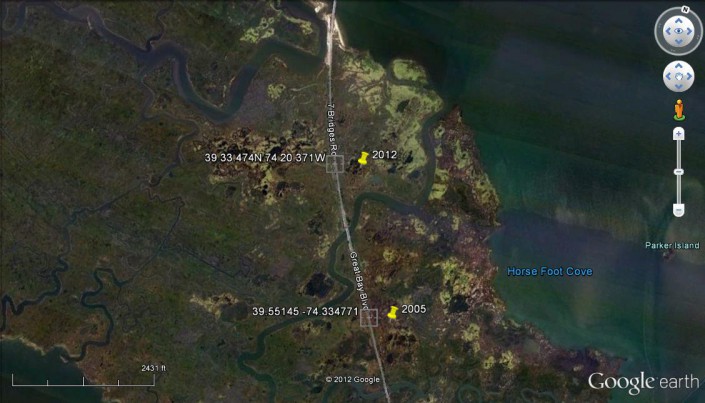7 years of survival (and counting)
A glimpse into the life of one adult female terrapin
By Stephanie Egger, Wildlife Biologist

Over the summers of 2004 and 2005, as part of my graduate research for Saint Joseph’s University and in partnership with Rutgers University Marine Field Station, I tagged 300 adult female northern diamondback terrapins to gain a better understanding of their nesting movements, nesting events, and road mortality on Great Bay Boulevard in Tuckerton, New Jersey. These terrapins were tagged with PIT tags (Passive Integrated Transponder tags) which are the size of a grain of rice and inserted directly under the skin. The PIT tags are individually numbered and can be read with a hand-held scanner in the field for essentially the life of the terrapin. Some terrapins were nesting more than once per season and generally within 50 meters from their original tagged location, but a few were found great distances (1000 meters) from their initial location (See Szerlag-Egger and McRobert 2007).
Ben Wurst, our Habitat Program Manager, and Kristin Ryerson, a CWFNJ intern, were able to scan some terrapins this summer as part of the Great Bay Terrapin Project and came across one of the terrapins I tagged in 2005! She has survived 7 years (and counting) on Great Bay Boulevard from becoming road kill on a road where 50 terrapins can be killed in a nesting season (See Szerlag and McRobert 2006). The distance between her location in 2005 and 2012 was 826 meters! It appears that she may have emerged from the creek and decided to travel north to nest instead of south (see Google Earth image below). I am hopeful we can continue to monitor the terrapins on Great Bay Boulevard and collect further information on tagged terrapins as it may have management implications for the future.
